Collectors of Wolverhampton postcards will be well acquainted with
Bennett Clark. As we have seen from his letter to Hart he
certainly produced these postcards himself. Certainly later, and
may be throughout his career, he also provided the photographs from
which other companies made postcards.
The photos below all come from an "Album of Wolverhampton Views",
which was printed and published by the local firm, Alfred Hinde.
The "album" consists of a single concertina sheet, in stiff card covers,
on which are printed 21 photos of the town. All of the photos were
taken by Bennett Clark and most of them are familiar from his postcards.
The album is not dated but seems to have been published round about
1900.
The photographs are good professional shots of local scenes.
The printing is somewhat muddy and not all the details are as crisp as
one might like. But the collection contains some interesting
photos and it is interesting to see what Hinde's thought were the local
scenes which ought to be included and which were representative of the
town. It is likely that the intended market for such a booklet was
visitors to the town. The photos are shown below in the order in
which they appear in the album.
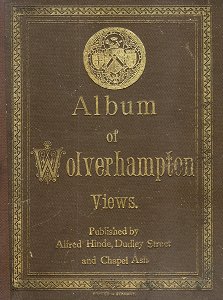 |
The cover of the album. In the circle at the
top is the old "coat of arms" used by the town before they got a
grant of proper ones in 1898. |
| The album was almost bound to start with St.
Peter's. At this time the graveyard still fronts Lichfield
Street and St. Peter's Gardens are yet to appear. |
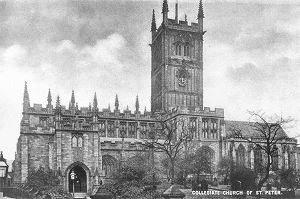 |
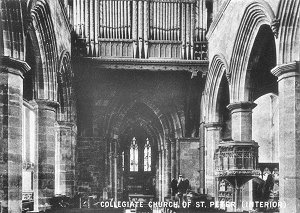 |
St. Peter's is also given a photo of the interior,
making it the only church in the album to get two photos. |
| Wolverhampton Grammar School on Tettenhall Road is next
in turn. The main original building dates from 1875. It seems that
Wolverhampton has always been proud of this old school, its sixteenth
century foundation giving the place some claim to interests beyond metal
bashing. |
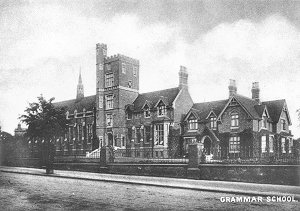 |
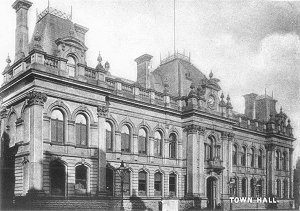 |
The Town Hall in North Street was built in 1867-1871.
It's architecture manages to make reference to both Roman and French
culture and its size lets you know that this is an important place. |
| But this is the hub of the town. The hansom cabs
and the tram lines speak of the bustle of the place, the bank puts
business back in the limelight and the time ball helps industry to run
on time. |
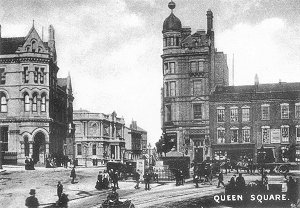 |
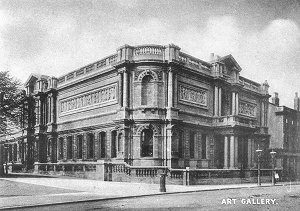 |
The town's cultural aspirations return with the art
gallery on Lichfield Street built in 1883-5. Note the building to
its right. This was built sometime after Lichfield Street was
cleared and redeveloped but, such was the commercial thrust of the town,
it was soon pulled down and replaced by another bank, the Midland, built
about 1910. |
| But Bennett Clark would also travel to take topographic
photos for other postcard publishers. This photo of Stretton Hall
was published by J. Wakefield of Brewood. |
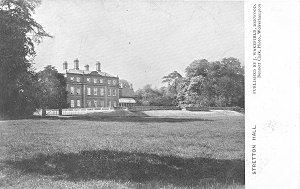 |
|

